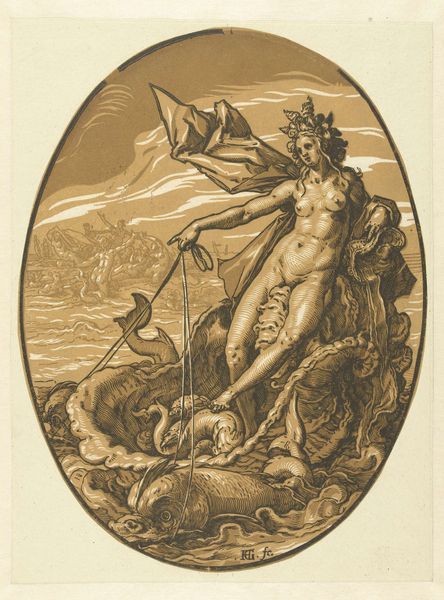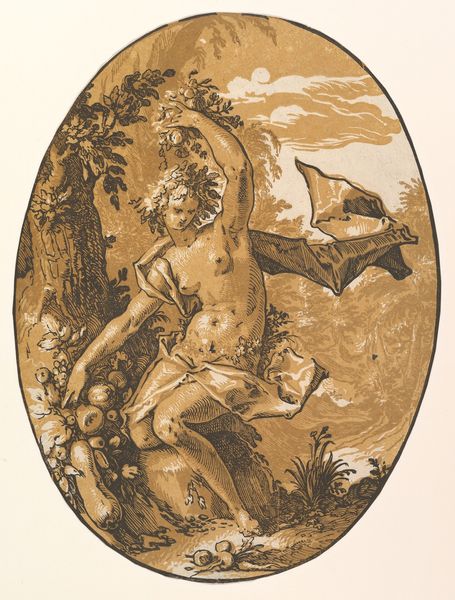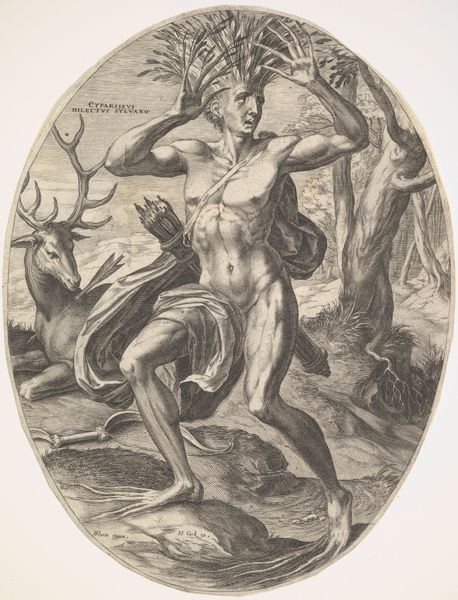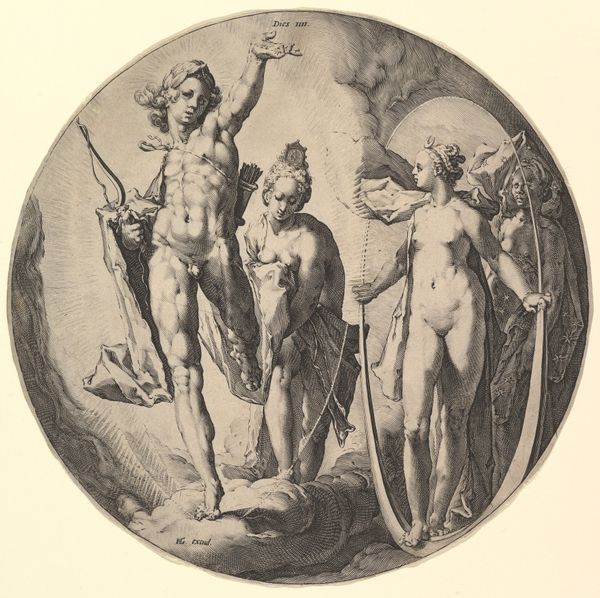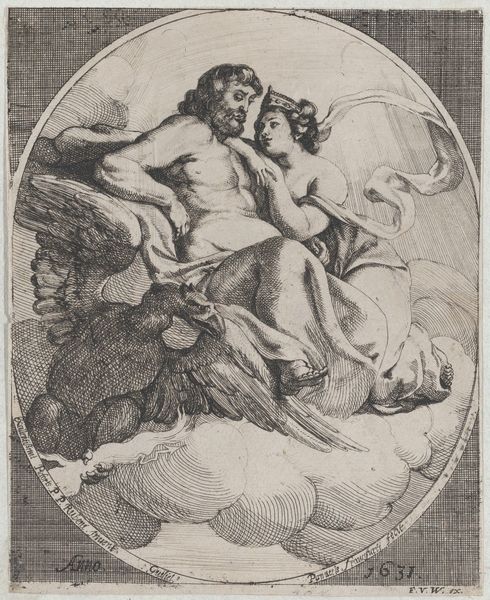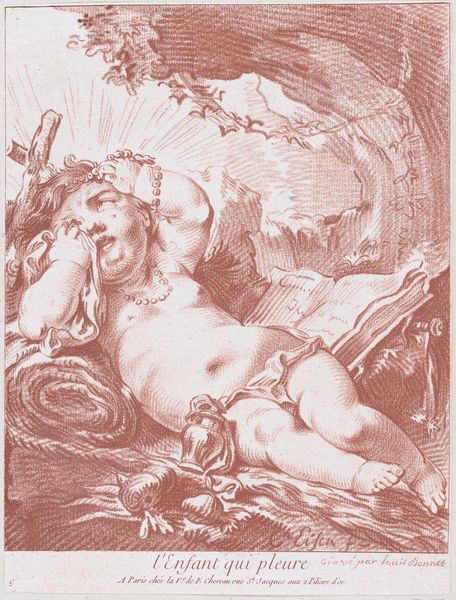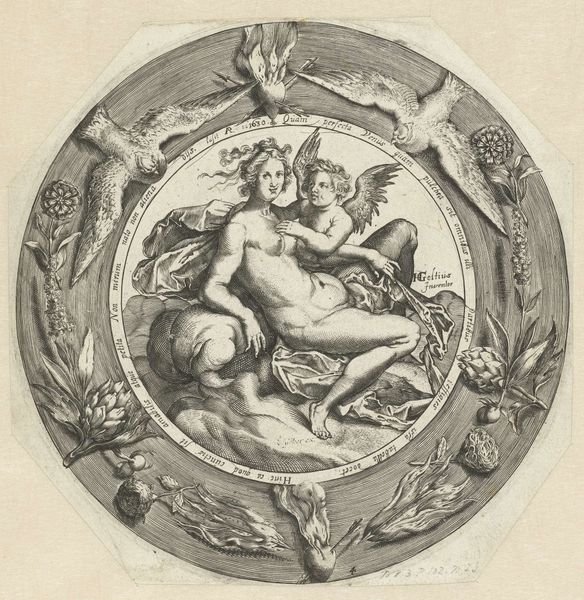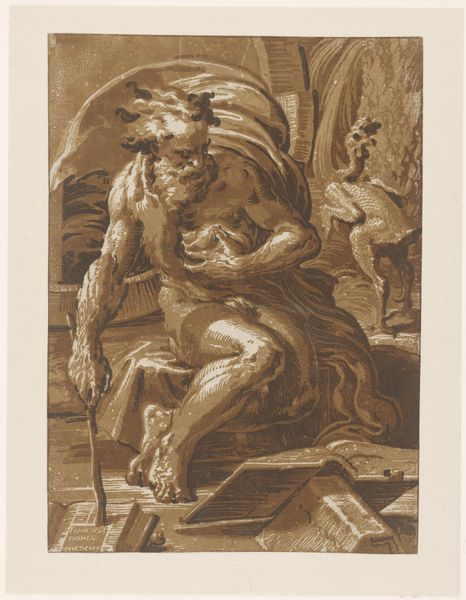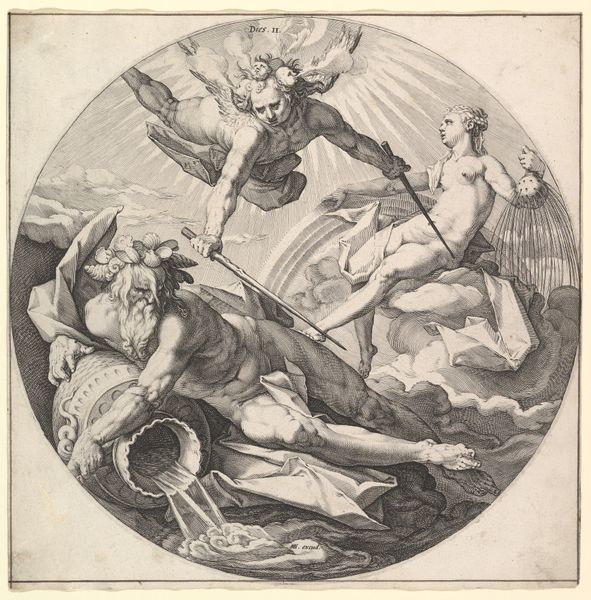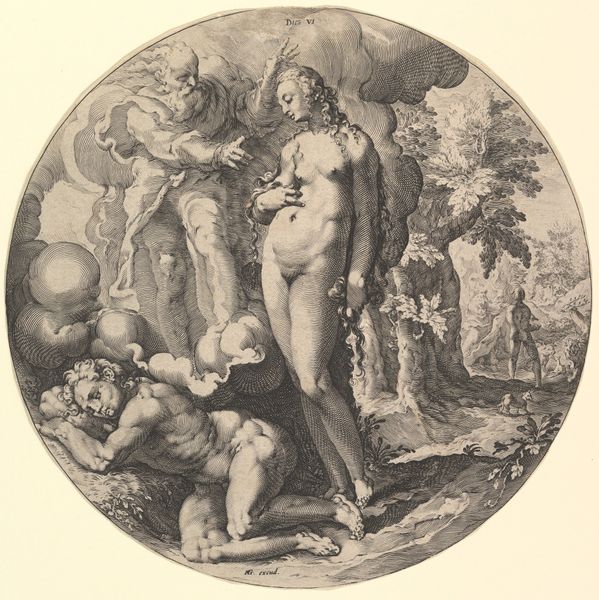
Tethys reclining in a giant shell chariot pulled by two sea creatures 1588 - 1590
0:00
0:00
Copyright: Public Domain
Curator: This is Hendrick Goltzius's "Tethys reclining in a giant shell chariot pulled by two sea creatures," created between 1588 and 1590. It’s currently held at the Metropolitan Museum of Art. Editor: What a bizarre and fantastical creation. The whole scene feels almost turbulent despite the seemingly static poses of the figures. The etching strikes me as chaotic in its intricate details, but still, strangely balanced. Curator: Balance is certainly key to Mannerist aesthetic, where we find elongated forms and contrived poses deployed precisely to display the artist’s virtuosity. Note the perfect curves and counter-curves; every element seems carefully orchestrated for maximum visual effect. Consider the placement of Tethys herself: nude, poised, and seemingly weightless upon her massive shell. Editor: It's striking how the lines themselves become almost sculptural. You can feel the effort and the physical labor in crafting this print. One wonders about the specific tools and techniques Goltzius used. Was he employing a traditional burin, or something more specialized to achieve this level of detail in the gradations of tone and the textures in the figures' rendering? Curator: The tools he would have been using were fairly standard, it’s the level of precision he achieves here that truly staggers. Notice how Goltzius modulates line thickness to model form, and the strategic deployment of cross-hatching that results in complex interplay of light and shadow? His mastery of form anticipates Baroque sensibilities even while maintaining Mannerist elegance. Editor: And how might the prints circulation have worked? Presumably prints like this would be comparatively affordable and portable objects compared to paintings. How did they operate within 16th-century European culture – who was consuming such imagery and where? Were such works meant for display, study, or simple collecting and appreciation of an artist's skill? Curator: The reproductive nature of prints allowed for wider distribution and impacted the concept of authorship in this period, yes. They facilitated the transmission of ideas and artistic styles across geographic boundaries and socio-economic lines, thereby shaping our Western aesthetic consciousness and enabling a kind of proto-global visual culture. Editor: This piece feels less like an attempt at capturing life and more like an exercise in rendering forms, lines, textures – exploring the possibilities inherent in his chosen medium. Curator: Precisely! It showcases the formal artistry and construction of the perfect female form. The thematic content almost becomes secondary, even arbitrary, to that objective. Editor: A showcase of the artist's technical and material capabilities indeed. I leave with a new understanding about the interplay between concept, material execution, and labor as visible here.
Comments
No comments
Be the first to comment and join the conversation on the ultimate creative platform.
